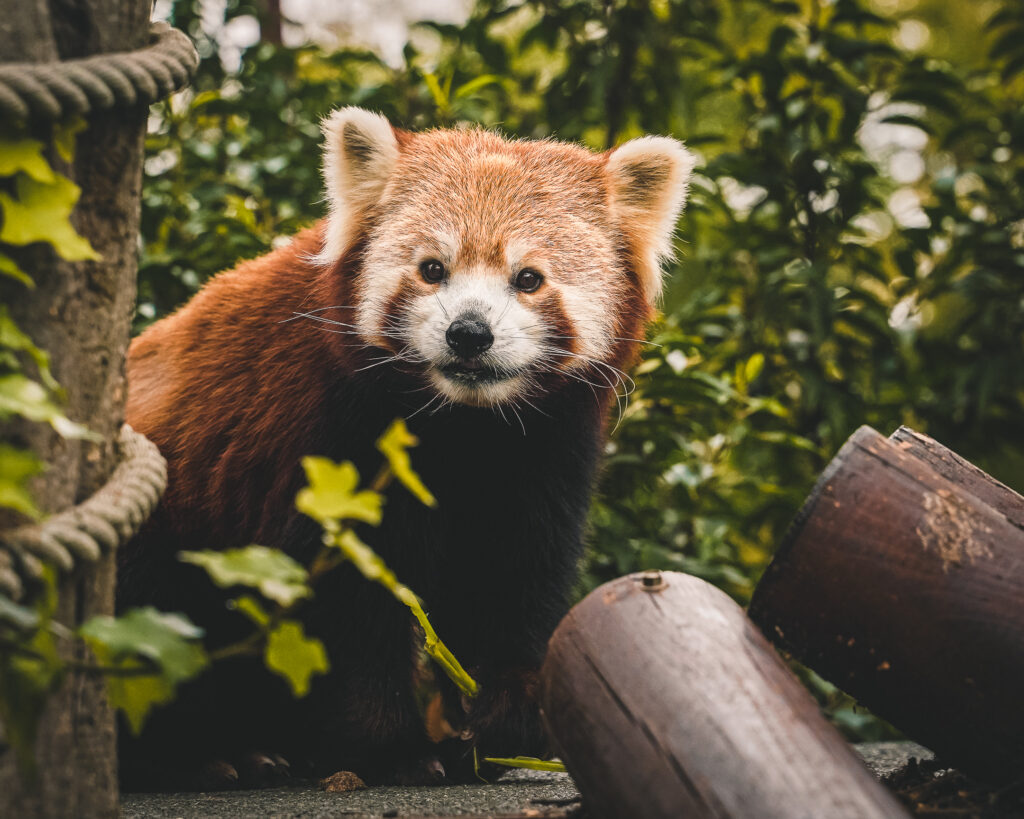Key Facts

In southwest China, the Red panda is hunted for its fur and especially for its highly valued bushy tail from which hats and wedding charms are produced. A Red panda’s coat is made up of long coarse hairs and dense undercoat to insulate against the cold weather of its high-altitude habitat.
The Red panda has previously been thought to be part of the raccoon and bear families. However, research has meant that they are now in their own separate family – Ailuridae.
They are excellent climbers, using their strong claws to grasp branches. Their jaws are powerful and their teeth and forelimbs are specially adapted for manipulating and crushing bamboo, which makes up 95% of their diet.
Red pandas are solitary animals in the wild with males and females only coming together in the mating season and a mother rearing her cubs until they are around 10 months – 1-year-old.
